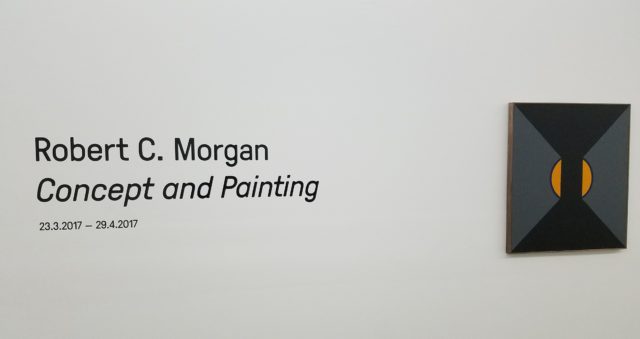 The diversity and sheer volume of art on view in Mexico City at any given point in time never ceases to amaze me. This week, I had an uncommonly un-cerebral experience of conceptual art critic Robert C. Morgan’s retrospective at Proyectos Monclova. At the opposite end of the aesthetic spectrum, I went down the rabbit hole of curator Iñaki Herranz’s pleasantly chaotic survey of young Mexican artists, El placer de la incertidumbre, at Casa de Cultura San Rafael. And at Museo Experimental el Eco, got to check out Folke Köbberling & Arturo Hernández having a demolition derby in the name of international relations and clean air.
The diversity and sheer volume of art on view in Mexico City at any given point in time never ceases to amaze me. This week, I had an uncommonly un-cerebral experience of conceptual art critic Robert C. Morgan’s retrospective at Proyectos Monclova. At the opposite end of the aesthetic spectrum, I went down the rabbit hole of curator Iñaki Herranz’s pleasantly chaotic survey of young Mexican artists, El placer de la incertidumbre, at Casa de Cultura San Rafael. And at Museo Experimental el Eco, got to check out Folke Köbberling & Arturo Hernández having a demolition derby in the name of international relations and clean air.
Of course, I snapped plenty of pictures of all of the above.
Robert C. Morgan: Concept and Painting

Proyectos Monclova
Colima 55, Col. Roma Norte, Mexico D.F.
On view until April 29th
Robert C. Morgan has been an art critic, conceptual art theorist, and teacher for five decades. He’s somehow managed to keep up a studio practice—a feat at which I marvel. This exhibition includes documentation from his early experiments with Gutai-like performances, abstract paintings, and photo collages. Curiously (for a retrospective, his first in Latin America) it doesn’t include much in the way of wall text, so viewers are left a bit in the dark as to context or even dates. But that reveals something else: nearly all of Morgan’s work looks like it could’ve been made in 1970 or 2017. That realization is somehow rewarding and reassuring in and of itself.
There’s an unusual sense of luxuriousness to Morgan’s minimalist abstractions, which oddly make them feel less like “decor” (a common criticism of abstract painting) yet more like textile or ceramic motifs. I’m having a hard time resolving that contradiction in terms internally/logically. But the “presence” of certain paintings feel more like kimono fabric or flags for an esoteric ceremony than the brand of hard-edged painting one might encounter in a hotel lobby. That’s an association that might be based on the inclusion of Morgan’s ritualistic performance documentation or regal color palette. Whatever the reason, it’s a must-see-in-person kind of show, largely because that aura isn’t done justice by photography nor language.
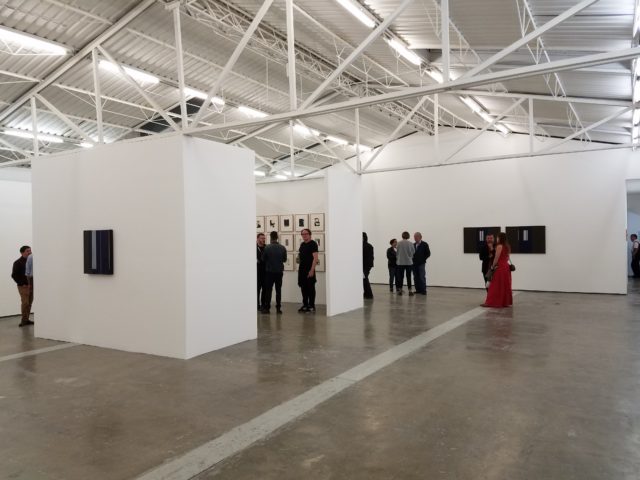
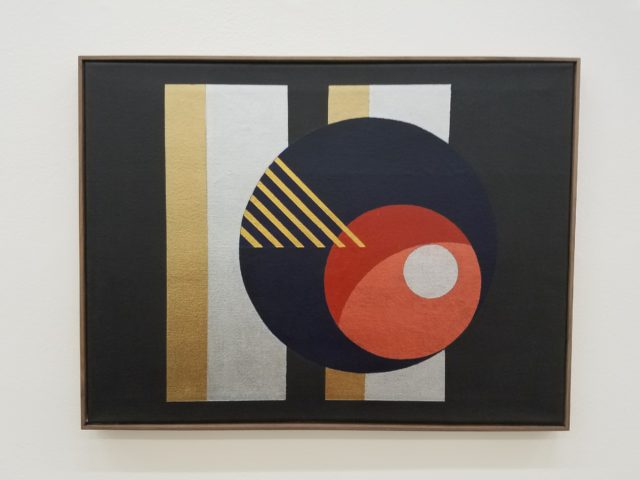

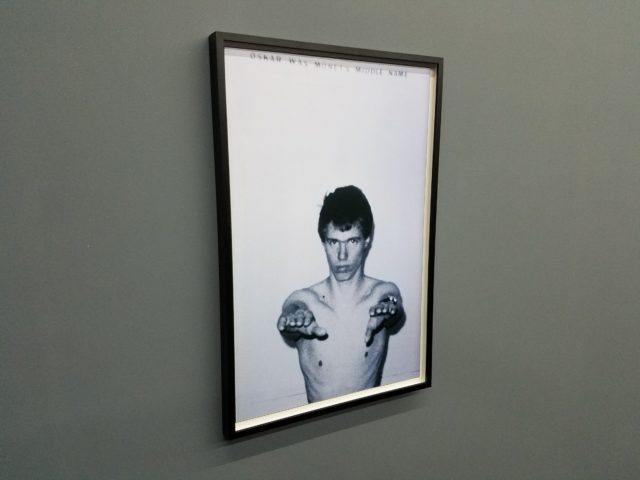
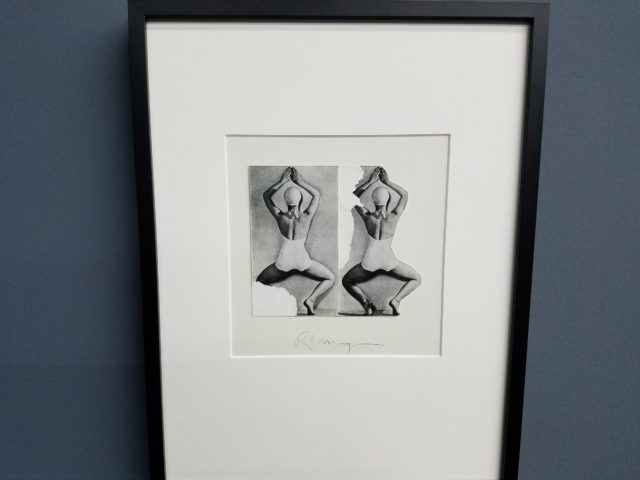
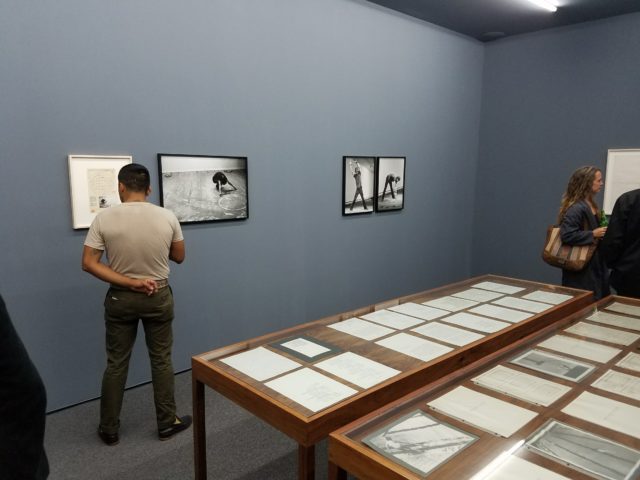
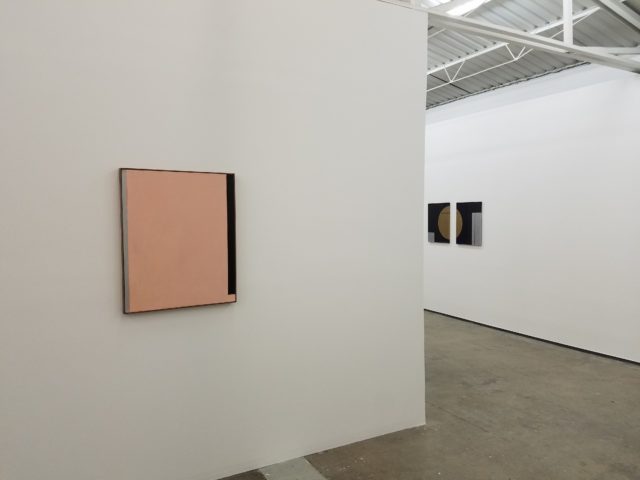
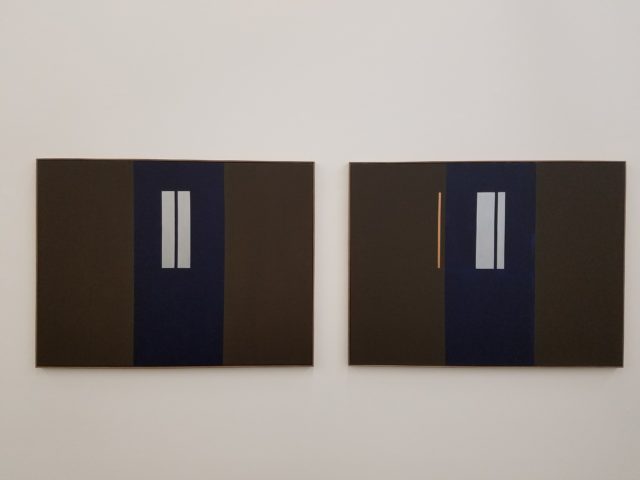
Folke Köbberling & Arturo Hernández Alcázar: Crushed Autogeddon
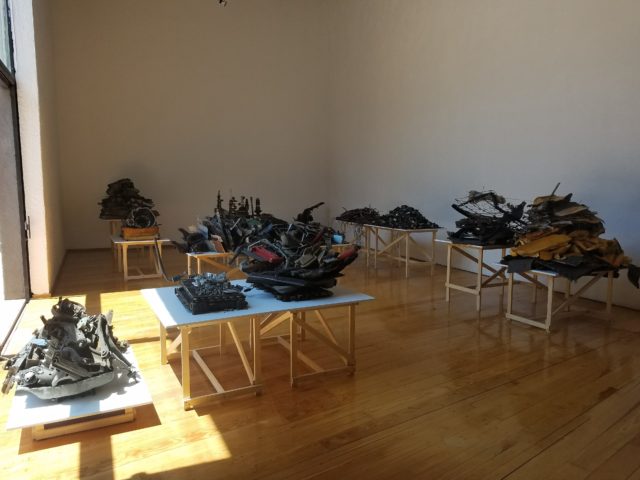 Museo Experimental el Eco
Museo Experimental el Eco
Calle Sullivan 43 Col. San Rafael, México DF
On view until 28th of May
Mexico and Germany are in the midst of a year-long cultural exchange known as the Año dual Alemania – México. Through this program, artists Folke Köbberling & Arturo Hernández Alcázar were united for a collaboration. They decided to comment on the (in)famous auto industries of both Mexico and Germany, in particular Volkswagen’s emissions-test-cheating scandal and the problem of air pollution in the Mexican capital. The duo strips old cars down for parts, recycling the usable components into bicycles (which were distributed in the park across from the museum) and the unusable components into an installation.
It’s a great idea, but a lot more could’ve been done with the “useless” remnants. As it stands, the installation is evocative of (but less interesting than) the junk markets of Iztapalapa. I’m more curious about those bicycles, which I’m assuming are out being used rather than put on a pedestal. The video documentation of the pair furiously dismantling cars alternates between monotonous and vicariously cathartic—what city dweller hasn’t dreamt of taking a sledgehammer to the hood of a particularly loud or smelly car?
The installation is at its best in the courtyard, which Alcázar transformed into a functional metal-smelting forge. There, the aluminum skeletons of cars were melted down and poured into a blindingly-reflective floor sculpture that looks a bit like a Jackson Pollock painting. It’s really what makes a visit to the museum worth it—but I don’t recommend staring directly into it at noon.
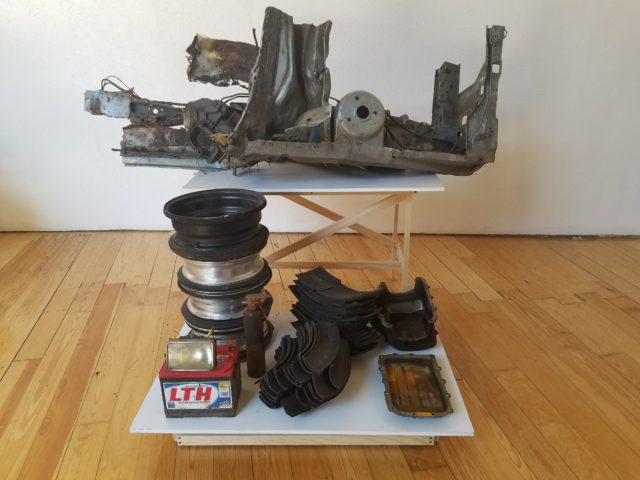
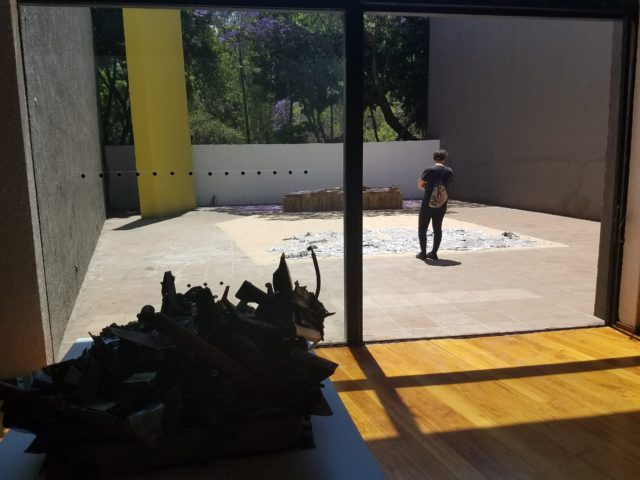
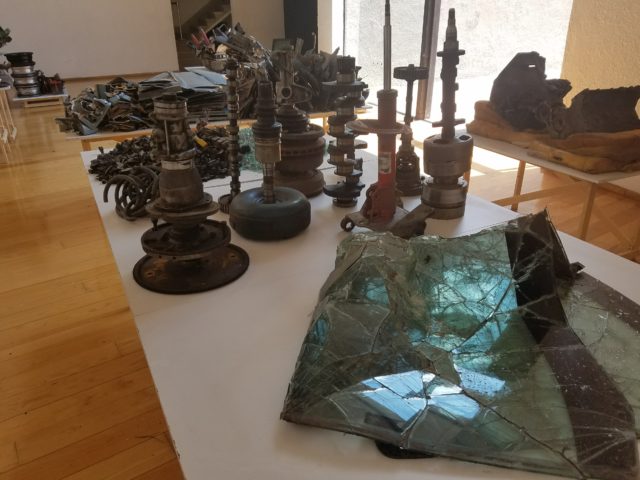
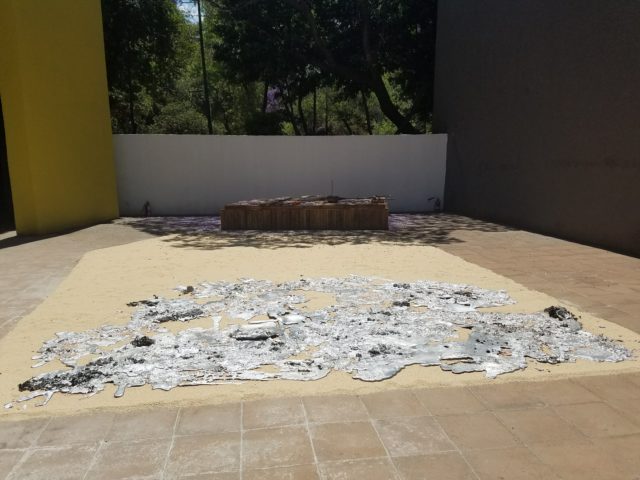
El placer de la incertidumbre
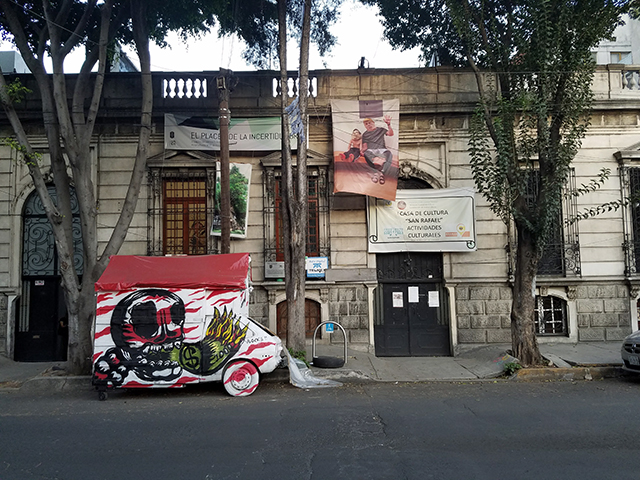
A burning truck-shack from Vlocke. Also pictured: a super creepy banner of someone in a latex Donald Trump mask beckoning visitors inside.
Curated by Iñaki Herranz
Casa de Cultura San Rafael.
Calle José Rosas Moreno 110. Colonia San Rafael, Delegación Cuauhtémoc, D.F.
Artists: Emerson Balderas, Julia Carrillo Escalera, Andrea Garza Romero, Abraham González, Antonio Gritón, Henri & Nazka, Iñaki Herranz, Julia, Isauro Huizar, Carolina Magis, Tláhuac Mata, Enrique Minjares Padilla, Josué Morales, Francisco Muñoz, Miguel Ángel, Patricio Jose, Fernando Pizarro, Miguel Ángel Salazar, Marcia Santos, Ricardo Sierra, Taller El Ajolote/Noé Vázquez, Roberto Tostado, Javier Velázquez Cabrero, Allan Villavicencio, Vlocke Luther Blizer, Pamela Zeferino y Ediciones Gato Negro (León Muñoz SAntini, Juan López & Andrea García Flores).
Invitado especial: el niño Pablo.
The majority of artwork I’ve seen in Mexico City has been in the context of immaculate modernist spaces that put most blue chip galleries’ Chelsea digs to shame. Walking into Casa de Cultura San Rafael, however, feels refreshingly like entering a ramshackle squat in the best way possible. In reality, it’s the neighborhood cultural center, and the exhibitions programing (comprising dozens of artists) overlaps with the center’s workshops, studio programs, and events. Even the small library has been reshuffled to arrange the books in a color gradient rather than by subject or author.
That vibe is reinforced by the anarchic curatorial style—the exhibition’s conceit is one of uncertainty and the nervous excitement that accompanies the creation and display of artwork. The atrium is dominated by what looks like years’ worth of graffiti (a piece by Jocelyn Nieto) and in at least one gallery Pamela Zeferino has peeled away chunks of the white ceiling paint to reveal a former layer—sky blue, which gives the impression of a disintegrating roof. Works are hung in odd locations (over doorways, nestled among potted plants, in windows separating artist studios from public spaces) and even overtly political pieces have a playful sensibility.
I’m thinking especially of Marcia Santos’s t-shirts, which are screen printed with common questions and answers exchanged between US border agents and Mexican nationals during crossings (“Where are you coming from? My house, I live in Juárez. Where are you going? Shopping.” etc…) . There’s a sense of absurdist dark humor to the shirt, one that’s cemented to the even more absurd reality of the militarized border by her documentary photos, which depict the artist handing the shirts out to travelers near the checkpoint.

Marcia Santos
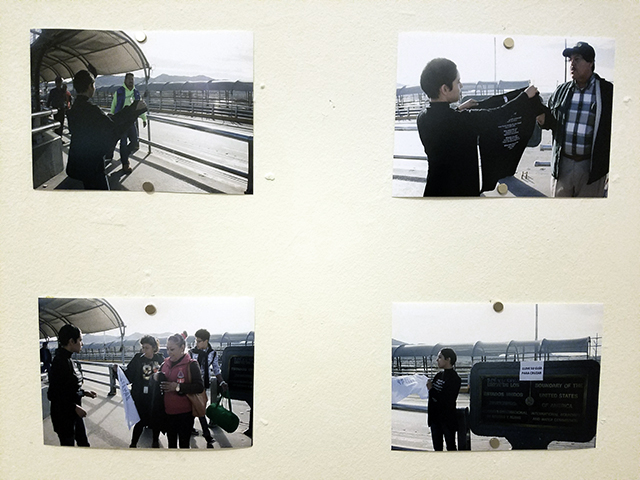
Marcia Santos
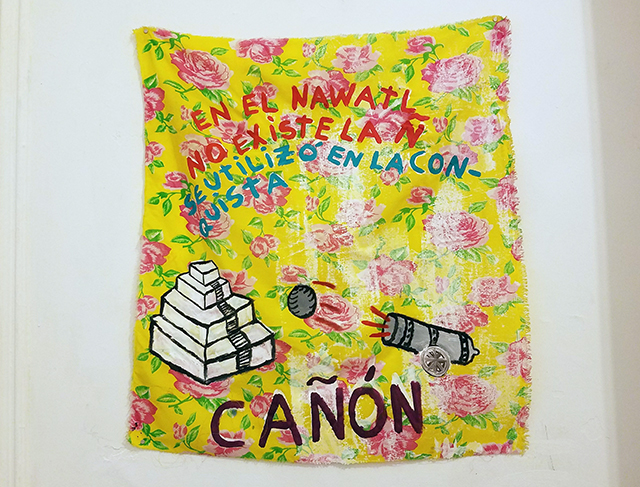
Antonio Gritón with Carolina Magis. “In Nawatl (the Valley of Mexico’s indigenous language) the ‘ñ’ doesn’t exist. It was used on them in the conquest”.

Vlocke Negro
A Barbie-inspired take on Angélica Rivera, Mexico’s first lady, who was at the center of a scandal involving her husband’s abuse of power in regards to a multi-million dollar real estate scheme involving her suburban mansion. Watch out Melania. The display case includes her notorious “Casa Blanca” and evidence of how much media attention the dolls attracted.
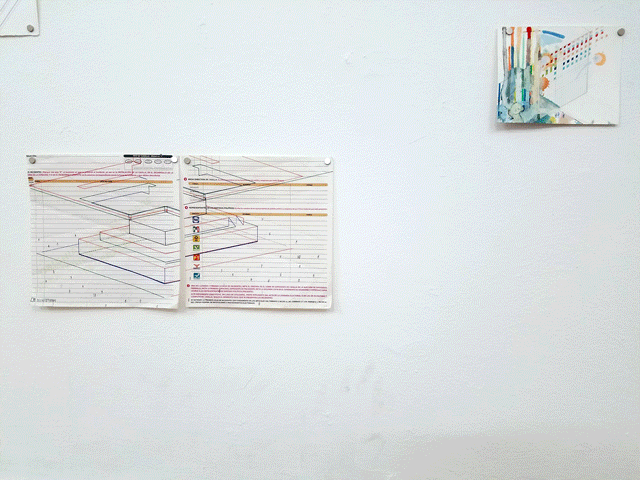
detail of a wall-full of schematic drawings by Ricardo Sierra

Tlahuac Mata
Tlahuac Mata’s delicate oil painting of an improvised lean-to propped up against a concrete wall was unexpectedly moving. Its position near the ornate plaster ceiling—two contrasting visions of “a roof over your head”—was especially effective.
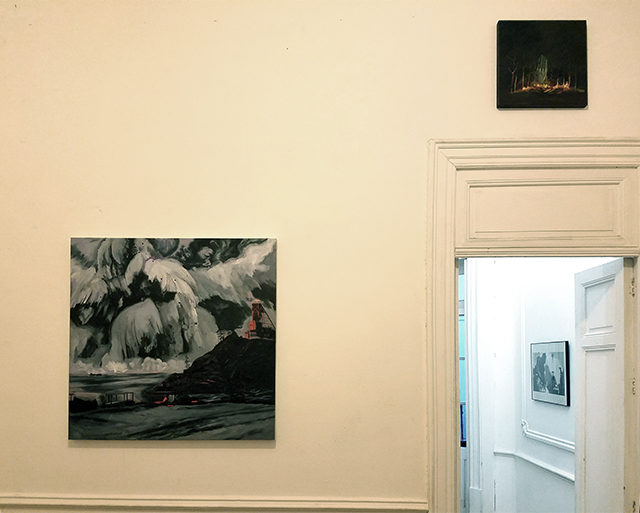
Disaster landscape paintings by Tlahuac Mata (L) and Patrício José (R).
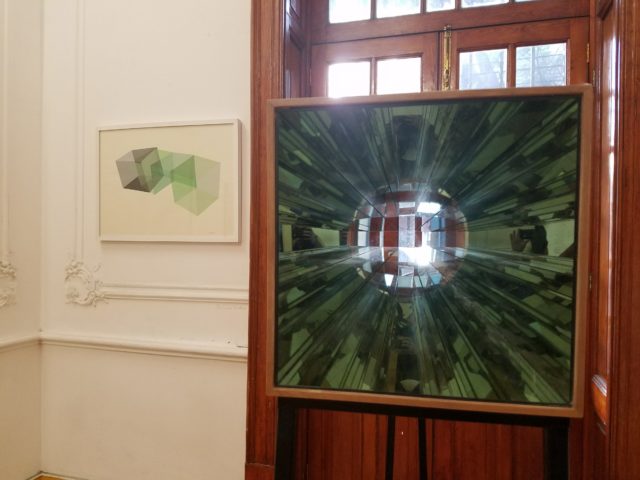
Julia Carrillo Escalera. A mirrored sculpture that focuses on a single pane of the window, flanked by geometric abstractions on paper.
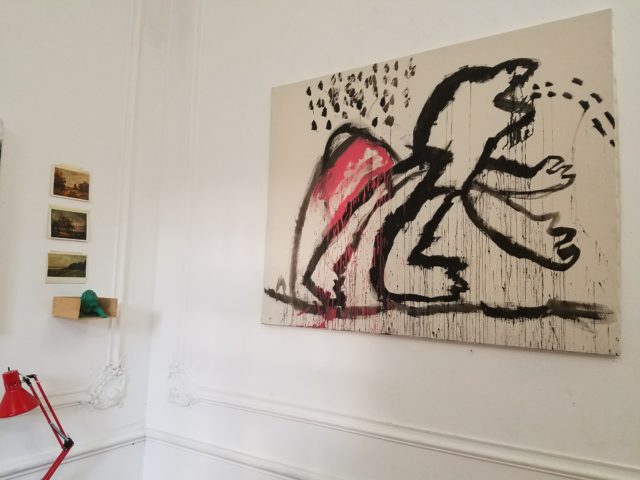
Work by an artist known solely as “Pablo”.
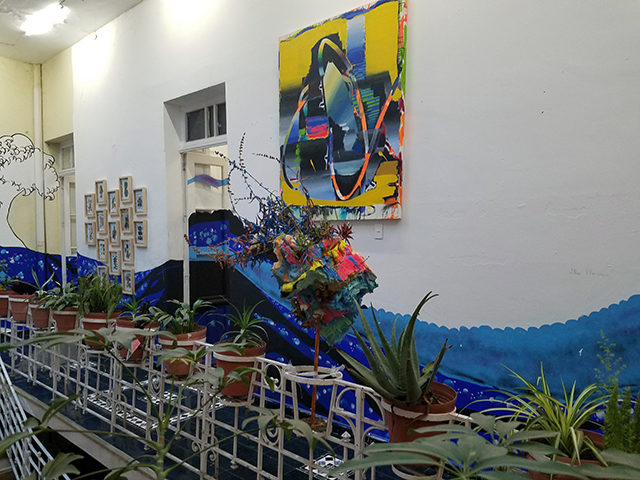
Painting and strange, plant-eating sculpture by Allan Villavicencio.
More recent Mexico City coverage:
- We Went to Gabriel Orozco’s OXXO
- SLIDESHOW: Mexico City Galleries, Part 1
- SLIDESHOW: Mexico City Galleries, Part 2
- Museum Punk Show in Need of A Sound Guy
- Material Light on Substance, Heavy With Dick Pics
- Slideshow: Zona MACO, The Art Fair Where Commerce and Politics Make Strange Bedfellows
- We Went to Mexico: General Idea at Museo Jumex Restored Our Faith in Art For Fuck’s Sake
- We Went to Mexico: Barbara Kruger and Juan Pablo de la Vega Take the Subway
- The Timelessness of Sex, Violence, and Portraiture: Otto Dix at MUNAL


Comments on this entry are closed.